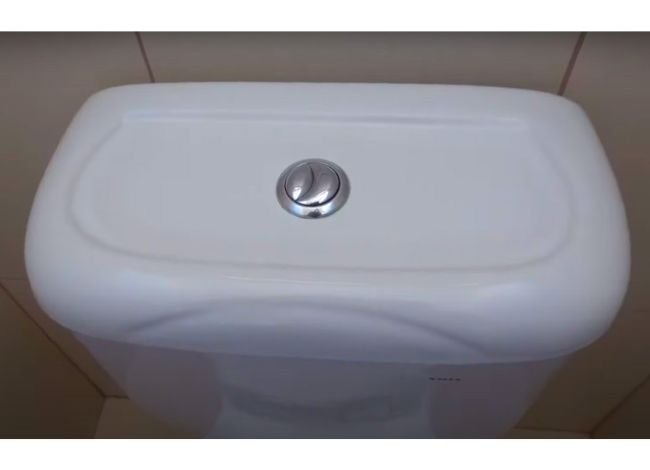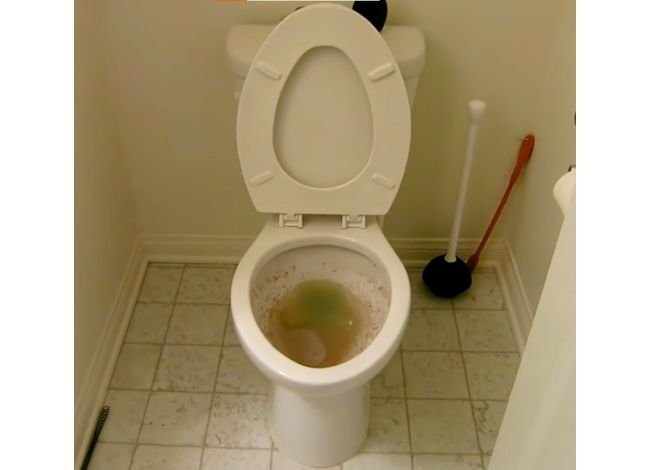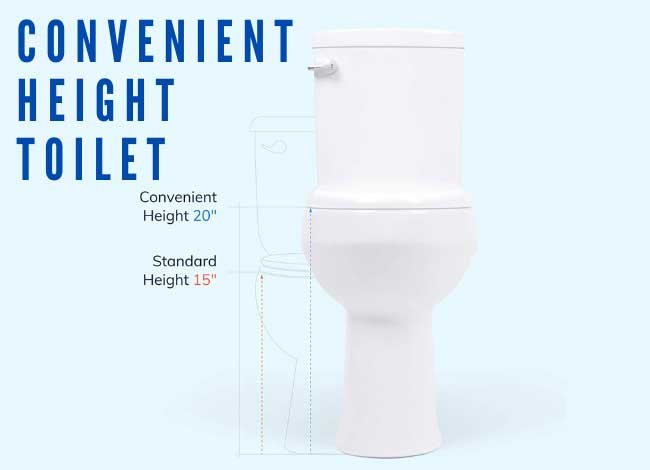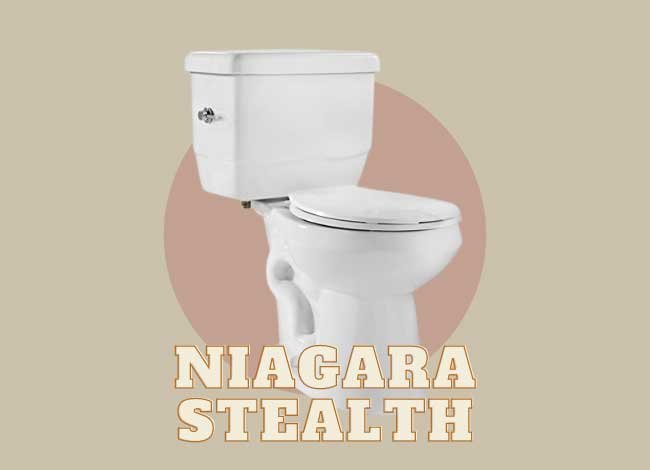Last Updated on July 8, 2025
When your toilet fills up with water then drains slowly, it can quickly become one of the most frustrating household plumbing issues. While it may start as a minor inconvenience, if left unresolved, it can escalate into a full-blown plumbing nightmare. A slow-draining toilet may result in clogs, poor flushing performance, and the need for multiple flushes to clear waste—wasting water, time, and money.
One of the most common signs of this issue is when you flush your toilet and the bowl fills up unusually high with water before slowly receding. This indicates a drainage issue, even if the toilet eventually clears out.
👉 Related: Toilet Flushes But Poop Stays – What’s Wrong?
💡 Common Causes of a Toilet That Fills Up Then Drains Slowly
There are several potential culprits behind this annoying problem. Here’s a list of the most likely causes:
- Clogged Drain
- Low Flow Toilet
- Blocked Vent Pipe
- Faulty Flapper
- Blocked Rim Holes
- Sediment Buildup
- Weak Fill Valve
- Chain Length
- Septic System Issues
- Sewer Line Issues
- Improperly Installed or Damaged Pipe
🔍 Why Does a Toilet Fill Quickly But Drain Slowly?
If your toilet seems to refill normally but still drains slowly, you could be dealing with internal component failures. The toilet cistern is a key part of the flushing process, and if it’s malfunctioning, drainage will be affected.
👉 Related: How to Remove Rusted Wing Nuts from the Toilet Cistern
🛠️ 1. Problematic Flushing System
If your toilet flushing system isn’t functioning correctly, it could be the root cause of the issue. Check inside the toilet tank while flushing. You’ll see a flushing mechanism (flapper and chain) that allows water to rush into the bowl.

If the flush valve doesn’t open fully or close properly, the toilet may not release enough water, or it may continue leaking slowly into the bowl—both leading to drainage issues.
👉 Related: Types of Toilet Flush Systems
🛠️ 2. Clogged Drain Line
The most obvious cause of a toilet that fills up with water then drains slowly is a clog in the drain line. Common culprits include:

- Excessive toilet paper
- Non-flushable wipes or items
- Hygiene products
- Plastic, toys, or debris
Even small blockages can restrict water flow and create slow drainage.
👉 Related: Does Charmin Clog Toilets?
🚽 More Reasons Why Your Toilet Fills Up With Water Then Drains Slowly
If the toilet flushes but the water stays or drains slowly, and you’ve already ruled out obvious clogs, it’s time to investigate other parts of the system. Several less-visible components can cause this drainage delay, especially if they’re blocked, dirty, or improperly functioning.
Let’s continue with more possible causes and their practical solutions.
🛠️ 3. Problems With the Air Vent
Your toilet’s plumbing system includes a vent pipe that helps regulate air pressure and allows proper water flow. When this pipe becomes clogged by leaves, bird nests, or debris, it can prevent your toilet from flushing properly.
A blocked vent reduces airflow, which restricts the suction needed for fast drainage. As a result, water rises and drains slowly, even if there’s no solid clog in the drain line.
👉 Related: Clogged Vent Pipe Symptoms
Solution:
Climb to your roof and inspect the plumbing vent pipe for visible debris. If you’re unable to safely reach it, call a plumber. Regular vent cleaning helps avoid future drainage issues.
🛠️ 4. Low Water Level in the Toilet Tank
A low water level in your toilet tank may not produce enough force for a powerful flush. This leads to partial waste removal and a toilet that fills up with water then drains slowly.
Causes of low tank water:
- Malfunctioning fill valve
- Misadjusted float
- Mineral buildup inside the valve
- Restricted water supply line
👉 Related: Raise the Water Level in the Toilet Tank
Solution:
Check the water line mark inside the tank. If the level is below it, adjust the float or replace the fill valve. Clean any sediment buildup if needed.
🛠️ 5. Blockage Between the Tank and Bowl
Water moves from the tank to the bowl through a flush valve. If there’s a partial blockage in this passage, it can limit water flow during a flush.
When this happens, you’ll notice water entering the bowl slowly and not with enough pressure to clear waste efficiently.
Common causes:
- Debris or buildup around the flapper
- Hardened mineral scale
- Misaligned flush valve
Solution:
Turn off the water, drain the tank, and inspect the flush valve for visible blockages or buildup. Clean or replace as needed.
🛠️ 6. Mineral Accumulation on Jet Holes
Toilets have small rim jets that direct water into the bowl during a flush. Over time, hard water minerals like calcium or lime can clog these holes, reducing water pressure and slowing drainage.
If your toilet fills up then drains slowly, and you have hard water, clogged jet holes could be the issue.
Solution:
- Use a wire hanger or brush to clean each jet hole
- Apply a descaling solution like vinegar or a toilet-safe limescale remover
- Repeat the process until jets are fully clear
🧽 A thick nylon brush works best for cleaning these jets.
👉 Related: How Often Can You Use Drano?
🧼 How to Take Proper Care of Your Toilet to Prevent Slow Draining
If your toilet fills up with water then drains slowly, it’s often the result of poor maintenance or improper usage over time. While some issues require mechanical repairs, many can be prevented with smart daily practices and toilet-friendly habits.
Below are proven tips to help you prevent clogs, maintain healthy drainage, and avoid expensive plumber visits.
❌ i) Avoid Using Bleach Tablets
Though bleach tablets are marketed as a toilet-cleaning convenience, they can actually damage your toilet’s internal parts. These tablets are highly corrosive and can deteriorate:
- Flappers
- Gaskets
- Seals
- Internal rubber/plastic components
Additionally, some tablets don’t dissolve completely and leave debris in the bowl or drain, contributing to slow drainage or clogs.
Better alternative:
Use liquid toilet cleaners or vinegar-based natural cleaning solutions. These are safer for your plumbing and equally effective in cleaning.
♨️ ii) Never Pour Boiling Water into a Porcelain Toilet
Some homeowners mistakenly use hot water to break up clogs or clean stains. While this may work on metal pipes or sinks, boiling water can crack porcelain.
Porcelain expands rapidly under intense heat, and if it’s not designed to withstand boiling temperatures, the bowl may develop hairline cracks or even split.
Safer option:
Use warm water mixed with mild dish detergent or enzymatic drain cleaners designed for toilets.
⚠️ iii) Avoid Using Drain Cleaners Made with Sodium Hydrochloride
Drain cleaners like Drano are often used to quickly dissolve toilet clogs. However, these chemical-based solutions can corrode your toilet’s pipes over time, especially if used frequently.
Common harmful ingredients:
- Sodium hypochlorite
- Sodium nitrate
- Sodium chloride
- Aluminum
These compounds can damage older plumbing systems and even PVC if used excessively.
What to use instead:
- A plunger (first choice)
- Toilet auger/snake
- Enzymatic toilet-safe cleaners
- Baking soda and vinegar solution
🧰 Maintenance Tips to Keep Your Toilet Flowing Smoothly
Here’s how to avoid the situation where your toilet fills up with water then drains slowly:
- Clean jet holes every month to prevent buildup
- Avoid flushing wipes, hygiene products, or large paper amounts
- Inspect the tank parts (flapper, chain, fill valve) every 6 months
- Check the water level line inside the tank regularly
- Use enzymatic treatments monthly to keep drains clean
- Schedule annual vent inspections, especially in leaf-heavy or animal-prone areas
🛠️ Step-by-Step Troubleshooting Guide: Toilet Fills Up With Water Then Drains Slowly
A slow-draining toilet can happen even when everything looks normal on the surface. The good news is, you can often fix it yourself—without calling a plumber. This section offers a step-by-step troubleshooting process to help you identify the issue and fix it before it gets worse.
✅ Step 1: Check for a Clog
First, determine if there’s a visible or hidden clog in the toilet or drain pipe.
What to do:
- Use a plunger with a flange and plunge for 15–20 seconds.
- If that doesn’t work, try a toilet auger (snake) to reach deeper clogs.
- Flush and check if water drains faster.
Tip:
Avoid using chemical drain cleaners unless labeled safe for toilets. These can cause long-term damage to your pipes.
✅ Step 2: Inspect the Water Level in the Tank
If the toilet is not flushing with force, the water level might be too low.
What to check:
- Open the tank lid and check if water reaches the manufacturer’s water level line.
- If it’s low, adjust the float arm or float cup upward.
👉 Related: Raise the Water Level in the Toilet Tank
✅ Step 3: Test the Flapper
A worn-out or misaligned flapper won’t release enough water during a flush.
How to test:
- Press the flush handle and observe how the flapper lifts and drops.
- If it closes too soon or leaks, replace it.
- Make sure the chain isn’t too tight or too loose.
✅ Step 4: Clean the Jet Holes
Mineral deposits around the rim jet holes can block water flow and weaken the flush.
What you’ll need:
- A small mirror
- A piece of wire or brush
- White vinegar or limescale cleaner
What to do:
- Scrape any buildup gently
- Pour vinegar into the overflow tube and let it sit for an hour before flushing
✅ Step 5: Check the Vent Pipe
If everything inside looks good but your toilet still drains slowly, the vent pipe might be blocked.
What to do:
- Go to the roof and inspect the vertical vent pipe.
- Remove any leaves, bird nests, or debris.
- If unsure or unsafe, call a professional plumber.
🚨 When DIY Fixes Don’t Work
If your toilet continues to fill up with water then drain slowly after trying these steps, it’s time to call a licensed plumber. There may be deeper problems like:
- Sewer line blockages
- Tree root invasion
- Cracked or shifted drain pipes
- Septic tank backups (for homes with septic systems)
These issues require specialized tools and expert diagnosis.
Frequently Asked Questions (FAQs)
We’ve covered the causes, fixes, and preventive measures for a toilet that fills up with water then drains slowly. Below are some of the most common questions homeowners ask when dealing with this issue.
Question: Why does my toilet fill up with water then drain slowly?
Answer: This is often caused by a partial or complete clog in the drain, a blocked vent pipe, low tank water level, or a faulty flapper mechanism that doesn’t release enough water.
Question: What can cause a clog in my toilet?
Answer: Common causes include flushing too much toilet paper, using non-flushable wipes, or allowing hair, feminine products, or foreign objects into the toilet. Mineral buildup from hard water is another common issue.
Question: How can I fix a clogged toilet at home?
Answer: Start with a plunger. If that doesn’t work, try a toilet auger. Avoid chemical drain cleaners unless specifically labeled toilet-safe, as they can damage pipes and internal components.
Question: What is a toilet vent and how does it affect draining?
Answer: A toilet vent allows air into the plumbing system to equalize pressure and help waste flow properly. If it’s blocked, your toilet may fill up and drain slowly due to poor suction.
Question: How do I fix a blocked vent?
Answer: Climb to the roof and inspect the vent pipe for leaves, nests, or debris. Use a hose to flush it out or call a plumber if it’s inaccessible.
Final Thoughts
A toilet that fills up with water then drains slowly may seem like a small issue at first—but it can lead to bigger plumbing problems if ignored. Whether it’s a simple clog, a blocked vent, or mineral buildup, identifying and resolving the problem quickly will save you time, money, and frustration.
Regular maintenance is key. By inspecting your toilet components, cleaning mineral deposits, and keeping non-flushable items out of the bowl, you can avoid slow drains and messy backups in the future.
Still having issues? Don’t hesitate to call a professional plumber to inspect for deeper problems in the sewer line or septic system.
Hi, I am Jose S. Franz. Currently, I am working as a professional plumber, and our team offers various plumbing services at an affordable price. After my college education, I completed a vocational certification course in plumbing systems and worked with several construction companies. Since then, I have fixed lots of different toilet models, from older to the latest versions. So I have more than 22 years of experience installing plumbing systems and toilets in both residential and commercial buildings.



